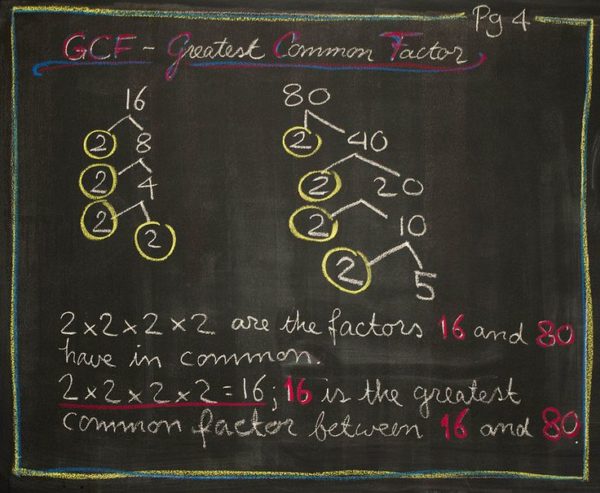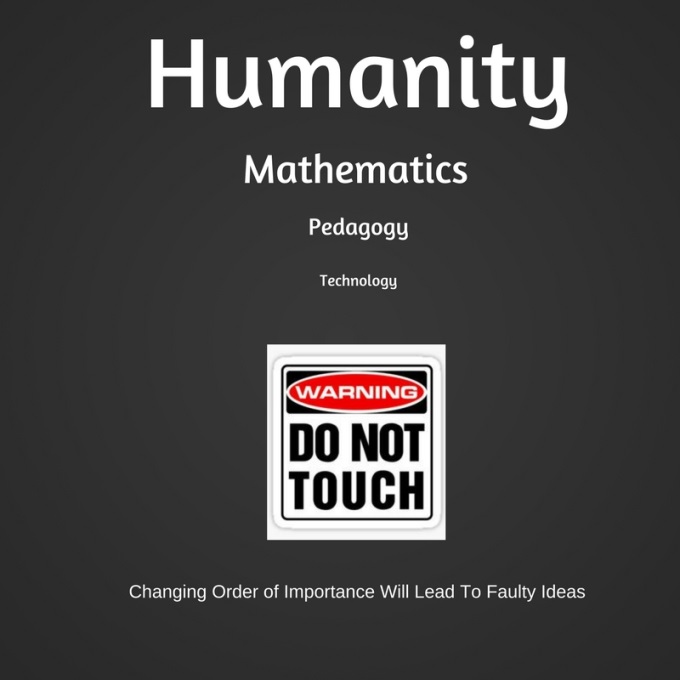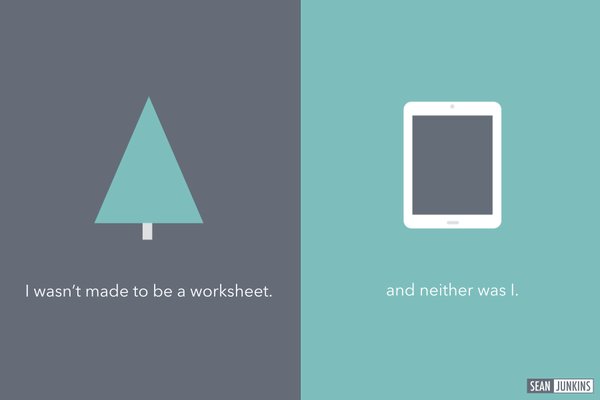
In my 20 years of teaching, I never used technology. I began my teaching career in 1994, where the gold standard for breakthrough technology was Geometer’s Sketchpad. It had just had its wide release three years earlier. While I saw the immense power of GSP many times, we never really crossed paths — I was ridiculously faithful to my chalk.
I have always loved chalk. I love the feel of it. I love the sound it makes on the chalkboard. I even love the chalk powder getting all over my clothes. All these things are minor, but the whole experience of teaching with chalk — especially the use of many colors — made the whole teaching of mathematics feel more organic. The tips of my fingers were caked in different colors. Maybe it’s strange, but seeing those colored smudges of calcite made me feel like an artist, honoring the creativity/grit/tenacity that is mathematics.
So, it might seem ironic, perhaps even contradictory, that I work — quite happily — for a company that is fully immersed in creating an online/digital math platform. That is because the company sees itself as learners responding to the adapting needs of educators and teachers. That is an ethos that resonates with me because I always felt that my teaching was critically incumbent on my desire to learn.
First order of business is that my company knows exactly its place — as well as ALL technology’s place — in the hierarchy of math education: at the bottom. Technology is a supporting actor in the robust story line of math education. If it thinks it can move into a more leading role and reshuffle the deck, then that is where trouble starts.

Remember, half the world doesn’t have toilets. So, not only does taking technology out of a supportive/reactive role to good pedagogy create a problem, but over-emphasizing its value negates the idea of equity in math education. It’s a tricky balance. However, the companies that understand the picture below will be the ones that thrive. The ones that don’t will be footnotes in the clogged highways of digital platforms.

Our company worked with The Global Math Project Team — a non-profit endeavor — and created the Exploding Dots experience for the entire world. The richness of exploration of the web app only alerted us again that technology can never be a replacement tool. If anything, we got more insight to the challenges/barriers there are to technology around the world — and that the mathematical experience must be inclusive to all. Creating technology for technology’s sake is not an option. It must be purposeful, intentional and integrative. It must augment and support the human connection/relation of teaching mathematics. Any attempts to override this, will lead to a faulty idea of the essence of learning mathematics. We also learned that the mathematics’ final narrative is humanity. Technology must try and participate in the humanness of mathematics.
Over 1.5 million students from 168 countries participated in the first Global Math Project (www.theglobalmathproject.org). One of the key numbers in the survey of participants was that 96% of students found that using Exploding Dots helped them make better sense of mathematics. And, through all the digital interaction, this is the kind of response that lets us know that technology is working in a cooperative/equitable way of bridging the understanding of mathematics.
When I meet math teachers/principals, I make sure to lay my cards on the table right away — that I remain skeptical of technology, especially if it is being too intrusive in a classroom and decentralizing the role of the teacher. And while I am proud of our company trying to meet the key metrics of a good digital platform, there is still a lot of room for improvement. This is a good thing — as we are only the driver taking instructions from Ms. Pedagogy.
Where she goes, we will try to follow. If we can’t, no worries. A textbook, manipulative or teacher instruction will be waiting. Creating false resource dichotomies — trichotomies — in learning mathematics does not support an inclusive idea of math education.
At the end of the day, it is important that we honor the essence of teaching mathematics — the human experience of learning as a class. Doing cool math with technology and without technology are not mutually exclusive — they are wonderfully complementary!
While I still pine for the days of chalk between my fingers, I am slowly coming around to the idea that IF technology stays a humble servant to pedagogy, that wonderful, new engagement ideas for learning mathematics can be created. The most important thing about teaching mathematics is about connecting with kids in ways that are genuine, human, and memorable. Technology can be vessel or a barrier for that.
I think I am on the right ship.
Sunil Singh
Sunil Singh was a high school math and physics teacher for 19 years. His vast experience in teaching math in different settings has helped him become a leader in creative math education. Since 2015 he has given over 40 workshops on kindergarten to grade 12 mathematics. In addition to being a regular contributor to the New York Times “Numberplay” section, Singh works as a Mathematics Learning Specialist for Scolab, a digital math resource company. He also travels all over North America as a speaker, promoting Family Math Nights in communities. Singh is also the author of Pi of Life: The Hidden Happiness of Mathematics. He can be reached at sunilsingh@mathjester.com and followed on Twitter @Mathgarden.
